Hi everyone,
In December 2022, after two years, I finally had the chance to come back to Philippines and spend a few days on Mindanao to perform a biodiversity assessment in two beautiful tracts of primary forests located near Bislig, on the eastern side of the island. Together with our guide, Felizardo Goring, with the blessing of the Bislig Tourism Office and with the valued help and support of Davao Crocodile Park’s director and staff, I stayed two days in the area for a brief and preliminary survey of the fauna of a forested area known as PICOP.
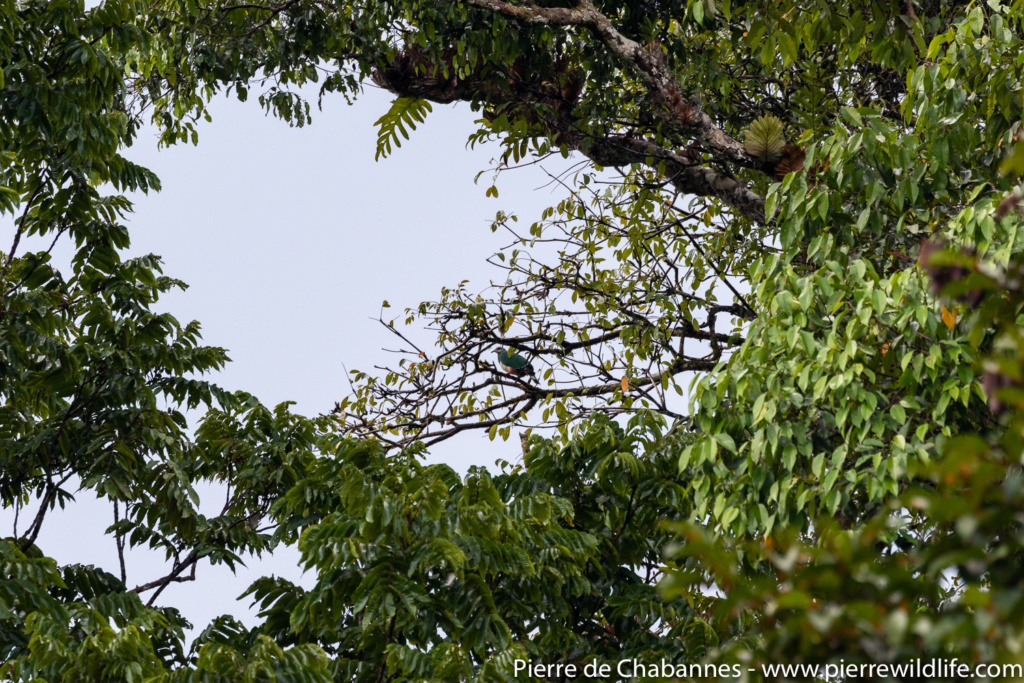 The pink-bellied imperial-pigeon (Ducula poliocephala) is a country endemic, threatened by deforestation. The species remains fairly common in PICOP rainforest area for the time being.
The pink-bellied imperial-pigeon (Ducula poliocephala) is a country endemic, threatened by deforestation. The species remains fairly common in PICOP rainforest area for the time being.
This forest is famous for being one of the best places in the island to observe and photograph some of the most elusive of all endemic bird species in southern Philippines. Amongst them, the Short-crested and Celestial monarchs are some of the most coveted targets of birders worldwide. But besides these (and many other) birds that were, just by themselves, enough of a good reason to go to PICOP, this forest is also known to harbor a wide variety of invertebrates, amphibians and reptiles. Amongst them are many recently described species (Mindanao regularly provides new species to science as we keep exploring this island thanks to dedicated Filipino scientists such as Kier Michael Pitogo and others) and quite a few that remain so far undescribed. Performing regular biodiversity assessments throughout this vast island and its many habitats is a good way to keep track of changes within the habitats, potential growing threats and gather valuable information for the conservation of these poorly known gems, some of which I was lucky to see and photograph during my two rainy days of biodiversity assessment. PICOP rainforest used to be a large logging concession area and despite the deforestation, some beautiful tracts of forest still remain and are home to many animal species including primary forest specialists. Although the logging has officially stopped, illegal logging is still a major activity in PICOP as you will see at the end of this article.
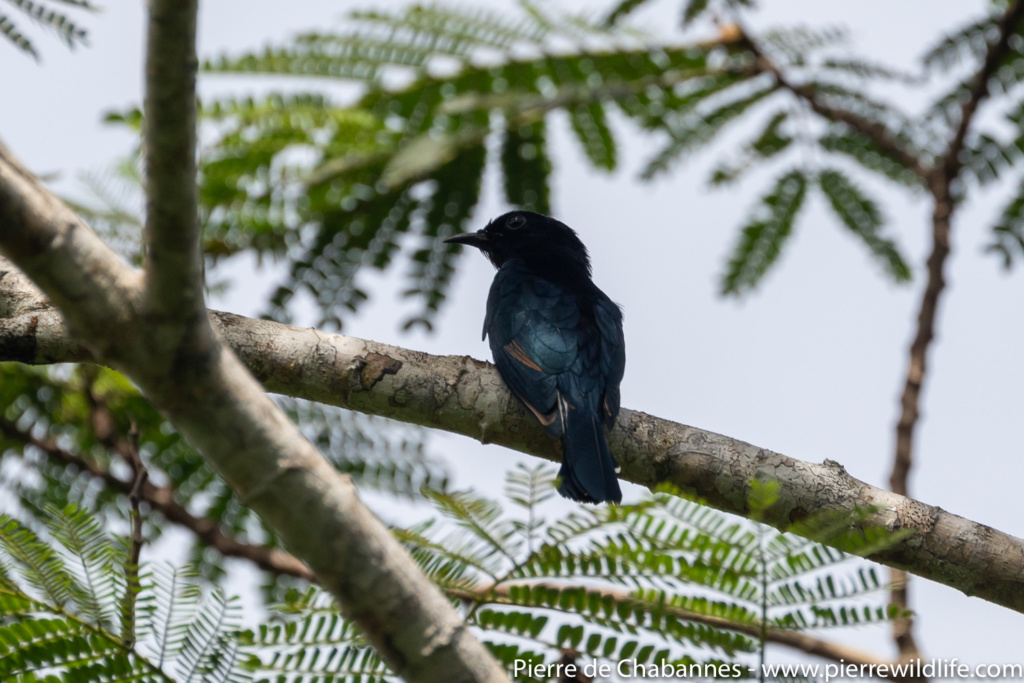 Despite the weather, we were blessed with a few country endemic birds such as the Philippine drongo-cuckoo (Surniculus velutinus velutinus). This species is more and more threatened by loss of habitat.
Despite the weather, we were blessed with a few country endemic birds such as the Philippine drongo-cuckoo (Surniculus velutinus velutinus). This species is more and more threatened by loss of habitat.
No wild mammals were seen during these two days in PICOP despite our surveys by day and night but the rain didn’t help with our plans and many species usually seen by wildlife watchers remained hidden. Nonetheless, our biodiversity survey proved to be quite successful with other targets, including species that aren’t usually monitored in most wildlife-watching trips.
As I said in the introduction, PICOP forest is famous for its birds and we spotted quite a few species during this journey. Some are regular wide-ranging species such as the Brown tit-babbler (Macronus striaticeps mindanensis) and the Purple-throated sunbird (Leptocoma sperata trochilus), others are endemic to the area but still common such as the Metallic-winged sunbird (Aethopyga pulcherrima) and the Philippine drongo-cuckoo (Surniculus velutinus velutinus). But something that immediately struck me is that the area of Mindanao and nearby smaller islands is home to endemic subspecies for most of the wide-ranging species or country endemic species present there. To me, these subspecies should be treated as separate conservation units from the rest of the species as Mindanao forests, once widespread, are now rapidely being destroyed without most of the world knowing about it.
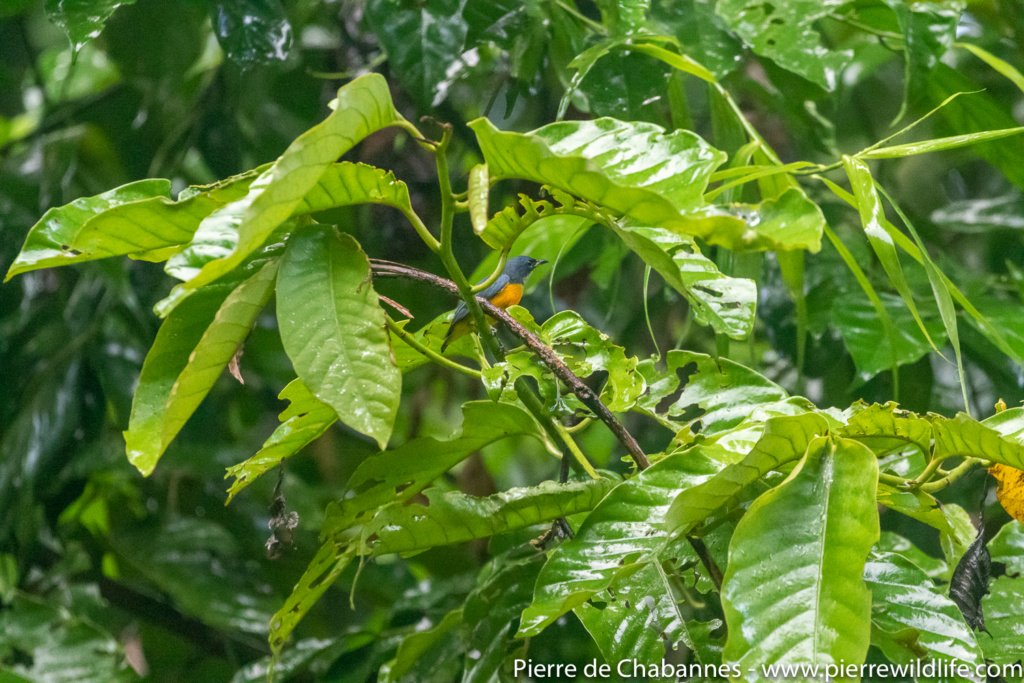 The Orange-bellied flowerpecker (Dicaeum trigonostigma cinereigulare) is one of the widest-ranging flowerpeckers in Southeast Asia. This subspecies occurs in six islands of the southeast and south Philippines.
The Orange-bellied flowerpecker (Dicaeum trigonostigma cinereigulare) is one of the widest-ranging flowerpeckers in Southeast Asia. This subspecies occurs in six islands of the southeast and south Philippines.
We also heard, saw and documented species that are known to be globally threatened such as the Mindanao bleeding-heart (Gallicolumba crinigera crinigera), the Azure-breasted pitta (Pitta steerii steerii), the Pink-bellied imperial-pigeon (Ducula poliocephala) and the rare local subspecies of the threatened Spotted imperial-pigeon (Ducula carola mindanensis). With the extent of deforestation ongoing on Mindanao, many of these subspecies (and species) are now facing a very bleak future if no immediate strict habitat conservation measures are taken.
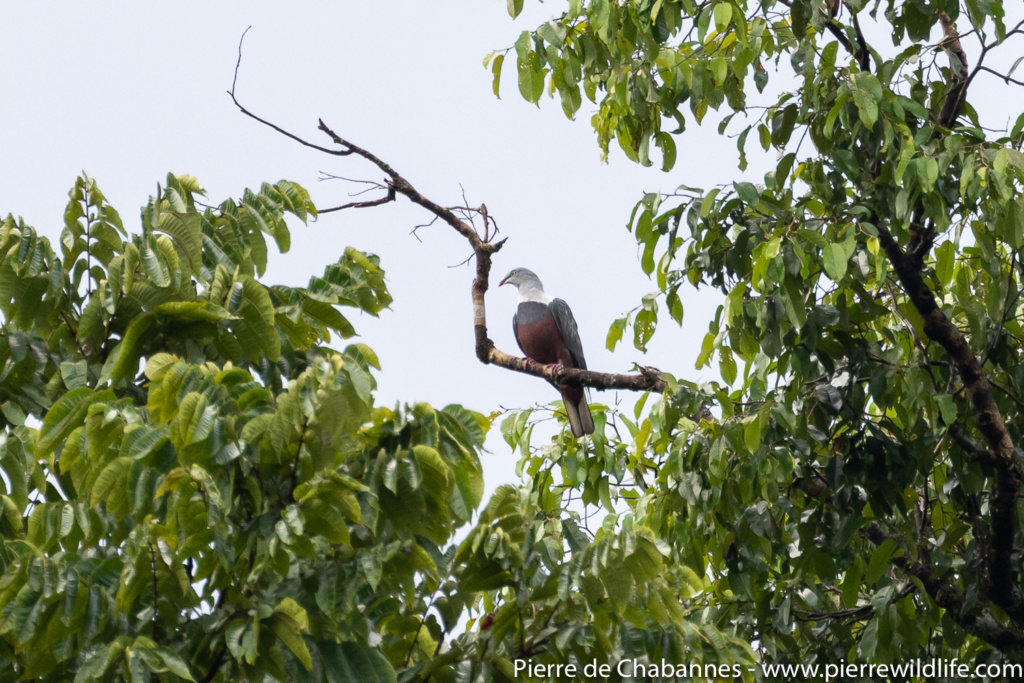 One of our luckiest and rarest finds, this stunning specimen of Spotted imperial-pigeon (Ducula carola mindanensis). This species is Vulnerable according to IUCN Red List and in worrying decline throughout its range.
One of our luckiest and rarest finds, this stunning specimen of Spotted imperial-pigeon (Ducula carola mindanensis). This species is Vulnerable according to IUCN Red List and in worrying decline throughout its range.
Philippines is home to a great variety of endemic reptiles, some of them being iconic such as the Samar cobra, Philippine crocodile, Mindanao water monitor, Mabitang monitor, Gray’s monitor and so on. But there are lots of lesser-known species that are in need of attention such as forest skinks. Philippines is home to many species of forest skinks including quite a few undescribed ones. For more information about Philippine’s endemic herpetofauna, I recommend checking the amazing work of local scientists such as Arvin C. Diesmos and Angel Alcala, two of the country’s most prominent wildlife conservation scientists in most’s opinion.
There are also sun skinks in the area and thanks to a recent revision work, we now know that there are actually quite a few endemic species in the island, most previously believed to be wider-ranging. Their conservation status needs to be understood and better studied. During our survey, I was lucky to photograph a nice adult specimen of Caraga sun skink (Eutropis caraga), a regional endemic described in 2020 in the above-mentioned publication.
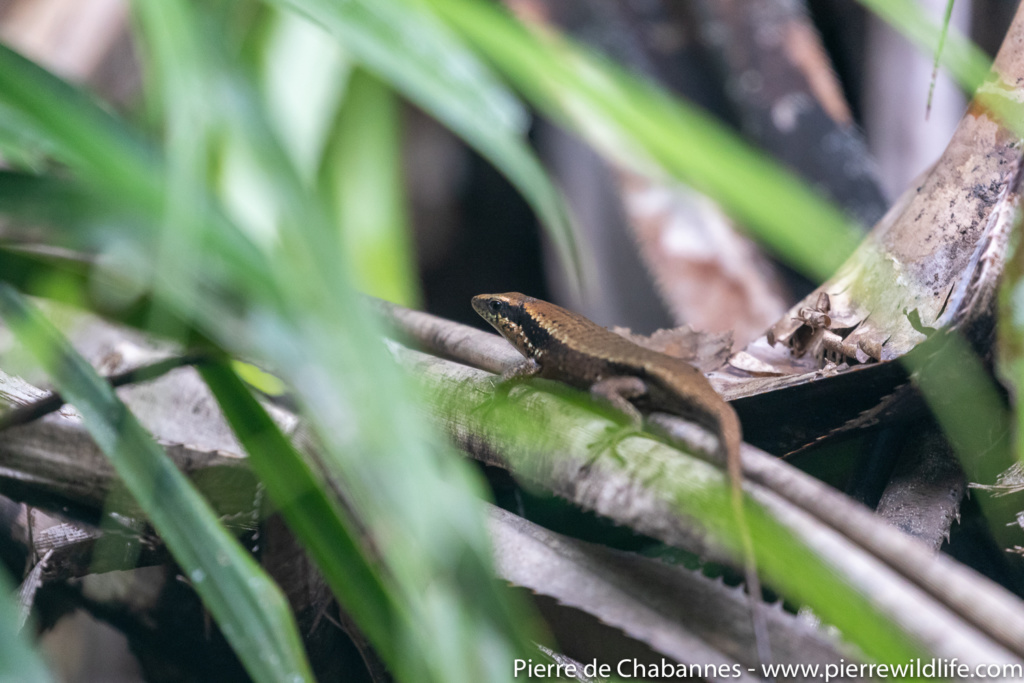 One of the adult Caraga sun skink (Eutropis caraga) we saw during a brief periode of sunshine on our second day in Bislig area.
One of the adult Caraga sun skink (Eutropis caraga) we saw during a brief periode of sunshine on our second day in Bislig area.
Last but not least, I have been fortunate to see and document many species of invertebrates, some of which still remain unidentified at this time due to lack of accessible data and reliable species identification resources. However, some others proved to be really interesting. The staggering diversity of forest weevil species of Philippines comes to mind and many entomologists as well as macro-photographers are still fascinated to this day by these small but strikingly colorful jewels of the forest. Their diversity is still being studied and new species are described on a regular basis. Two of the species I photographed in PICOP are likely either new to science, yet un-named or color morphs or known species. Their status needs to be clarified in the future.
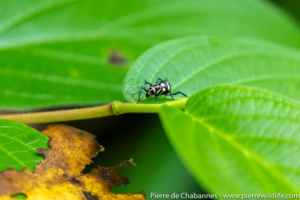
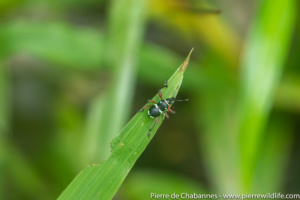
Two unidentified (and possibly undescribed) forest weevil species. The left one likely belongs to the genus Pachyrhynchus whereas the right one could be Metapocyrtus.
I photographed two other endemic species, namely Pachyrhynchus antonkozlovi and Metapocyrtus sakaii, that have been described as late as 2016 and 2011. For both of these, the extent of their range and their conservation status is unknown but these species are likely either strongly linked or dependant on forests for their survival.
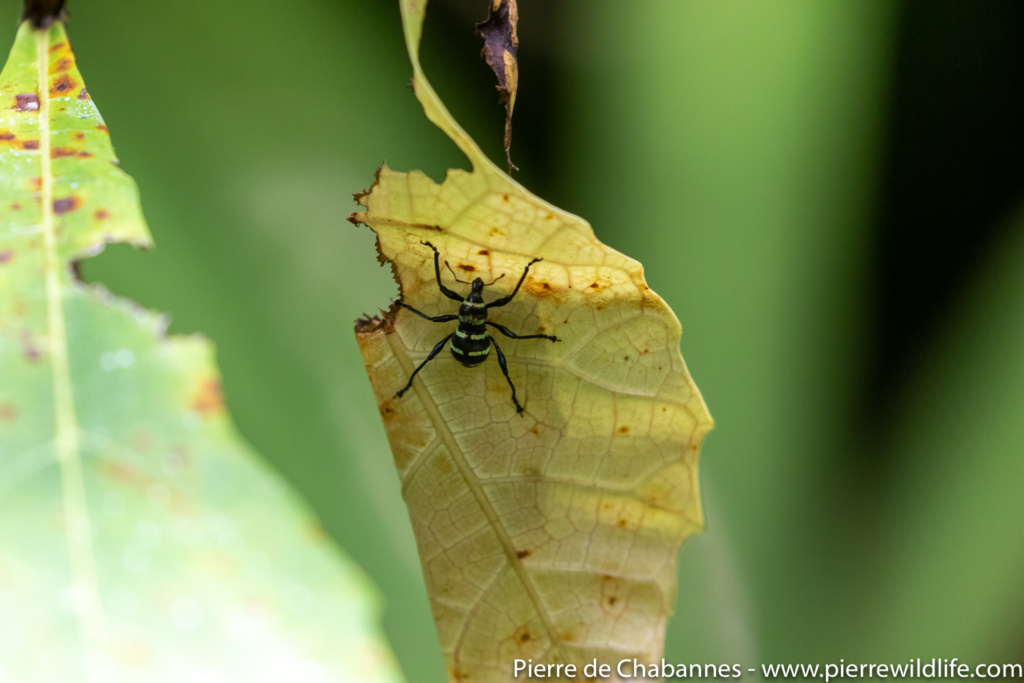 This weevil species, likely Pachyrhynchus antonkozlovi, was finally described to science in 2016.
This weevil species, likely Pachyrhynchus antonkozlovi, was finally described to science in 2016.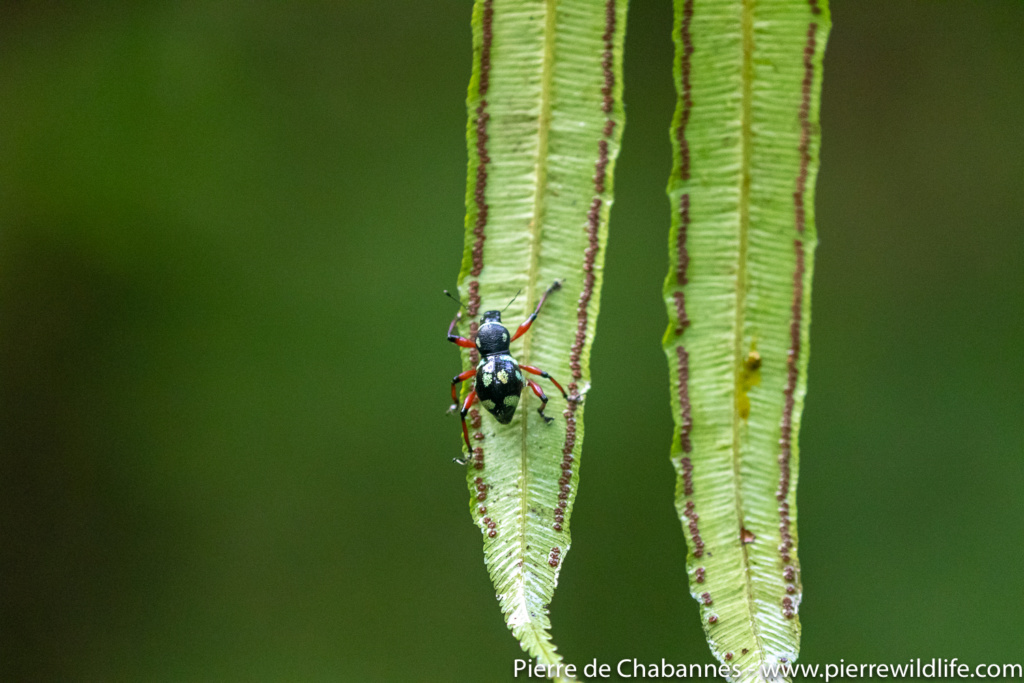 We have identified this beautiful forest weevil as being Metapocyrtus sakaii, an endemic species described in 2011.
We have identified this beautiful forest weevil as being Metapocyrtus sakaii, an endemic species described in 2011.
On the morning of our first day of biodiversity survey, we spotted a pair of unidentified stick-insects, likely belonging to the genus Orthomeria. However, to my limited knowledge, there seems to be no Orthomeria described from Mindanao so would this be a new species ? Did I miss something in this genus or do we have yet another genus of stick insect ? I hope this matter will be clarified soon as this species looks absolutely beautiful !
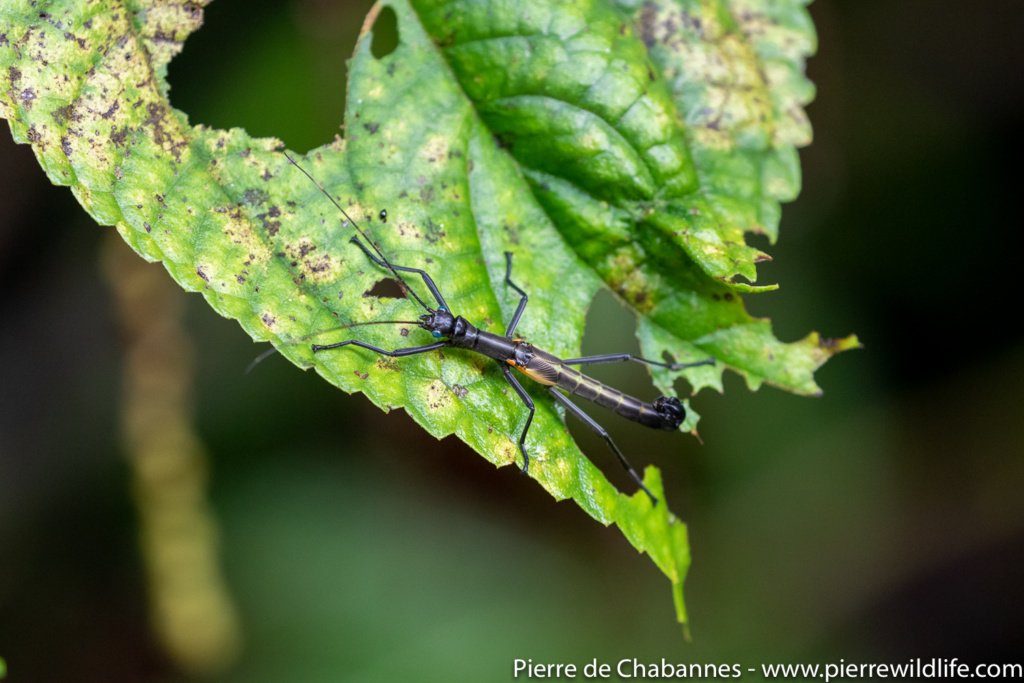 This stick-insect species, likely belonging to genus Orthomeria, is unidentified at this time and could be a new species.
This stick-insect species, likely belonging to genus Orthomeria, is unidentified at this time and could be a new species.
Outside of the insect realm, I also photographed a couple of other interesting invertebrates, including this beautiful (but troublesome as it is invasive) hammer-headed worm (Bipalium cf. nobile). The species ID remains to be confirmed but it appears to be quite common now in the area. This predatory worm has successfully adapted itself to Philippines and the evolution of its populations and the harm it can do to local wildlife is currently being monitored.
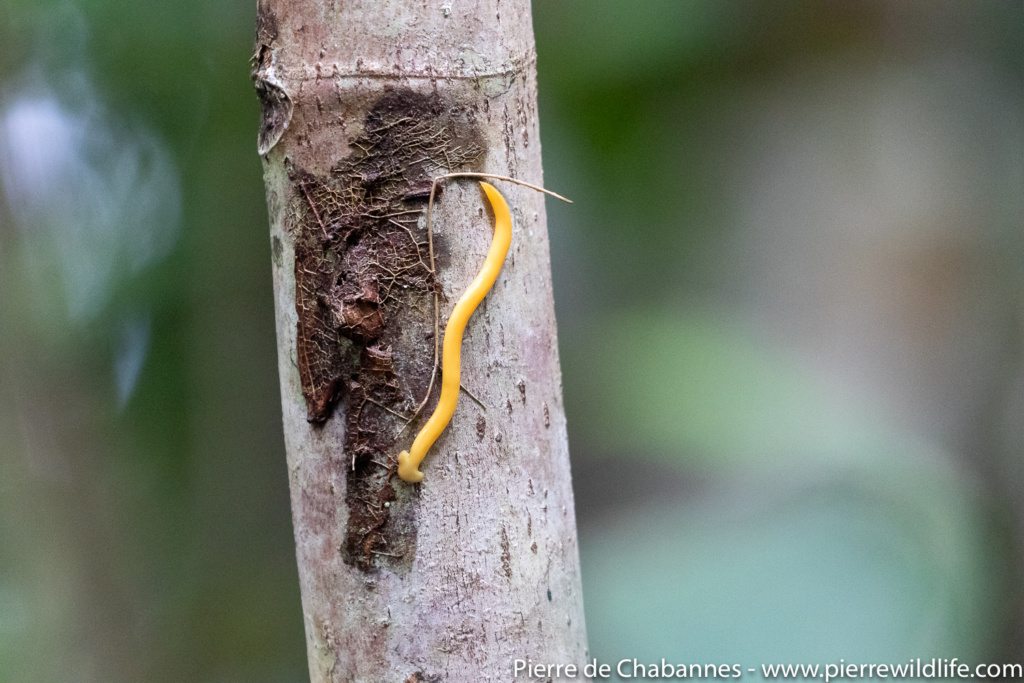 The beautiful but invasive Hammer-headed worm (Bipalium cf. nobile), photographed climbing down a tree in PICOP rainforest.
The beautiful but invasive Hammer-headed worm (Bipalium cf. nobile), photographed climbing down a tree in PICOP rainforest.
Last, we found a number of spiders, including two relatively big huntsman spiders, both of them within 10 meters from one another in one of the wildest parts of PICOP forests. The first one, carrying an egg-sac was identified as Heteropoda boiei but the second one, displaying striking colors could be something new. As some of you know, a huntsman spider named after Rock legend David Bowie inhabits the forests of Peninsular Malaysia, Borneo and perhaps parts of the Philippines (such as Palawan?). However, to my knowledge, the David Bowie spider (Heteropoda davidbowie) hasn’t been recorded from Mindanao. To add to this matter, the individual photographed here (see below) is only superficially similar to David Bowie’s spider. The presence of distinct white dots on legs and absence of red lines on chelicerae, coupled with slightly different color, shape could mean that we are dealing with something poentially new. I can’t wait to gain more knowledge on this specimen located by my good friend Jop Gonzales who has been driving us throughout this exciting journey.
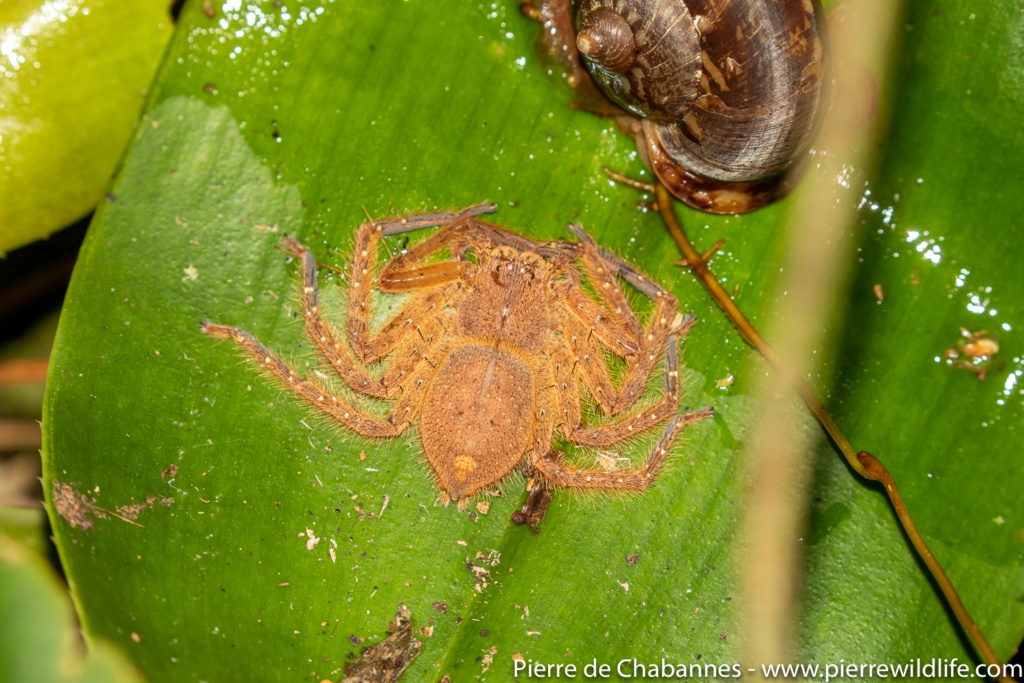 This beautiful unidentified huntsman spider (Heteropoda sp.) is in ambush position, next to an endemic forest snail species.
This beautiful unidentified huntsman spider (Heteropoda sp.) is in ambush position, next to an endemic forest snail species.
However, as exciting as this small-scale biodiversity survey was, it also left me with a very bitter taste in my mouth as I witnessed the large-scale destruction of Mindanao’s primary forests. The palm oil producing companies that were operating mostly in Malaysia, Sumatra and Borneo are now well established on Mindanao and operating with what seems to me as very little to no monitoring at all. Many valuable primary forest patches are being rapidly destroyed and this piece of news doesn’t seem to reach many outside of the country as we, westerners, are more focused on the fate of Sumatra and Borneo. To this day, at least 70% of Mindanao’s key biodiversity areas are not legally protected (Mallari et Al. 2016). Let’s not forget Mindanao and its amazing wildlife! I really hope that international conservation organizations will take this matter into their own hands and help Philippines protect its forests. I will do my part by performing further biodiversity assessments and helping raising awareness about the fate of the primary forests of Mindanao.
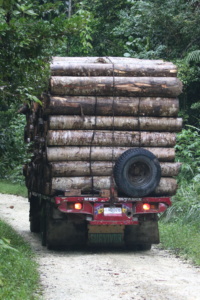 One of the few trucks we saw during our time in PICOP, carrying freshly cut trees from the protected forest area. While we were looking for wildlife, we could hear the chainsaws…
One of the few trucks we saw during our time in PICOP, carrying freshly cut trees from the protected forest area. While we were looking for wildlife, we could hear the chainsaws…
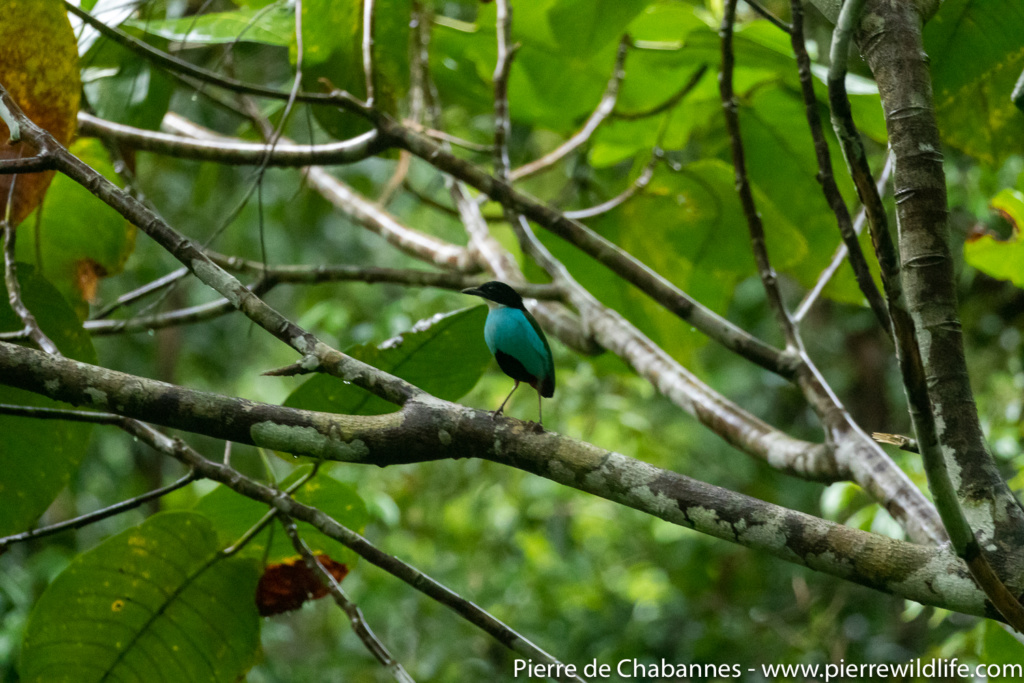 The stunning Azure-breasted pitta (Pitta steerii steerii) is a primary forest interior specialist and currently listed as Vulnerable by IUCN. With the ongoing destruction of the forests within its very limited range, this species could soon face a much higher risk of rapid extinction if no conservation action is taken.
The stunning Azure-breasted pitta (Pitta steerii steerii) is a primary forest interior specialist and currently listed as Vulnerable by IUCN. With the ongoing destruction of the forests within its very limited range, this species could soon face a much higher risk of rapid extinction if no conservation action is taken.
I would like to thank the Dizon family for supporting this biodiversity assessment, particularly Marco Dizon and Sonny Dizon without whom this survey wouldn’t have happened. I would also like to thank my great friends Ana Borja and Jop Gonzales for their help, support, friendship and presence during this field assessment. I wouldn’t do this without you ! Last, I would like to thank Felizardo Goring, our guide, for his patience, persistence and great skills ! And last but not least, my love goes to my wife who has been supporting me and my dreams for the past 10 years !
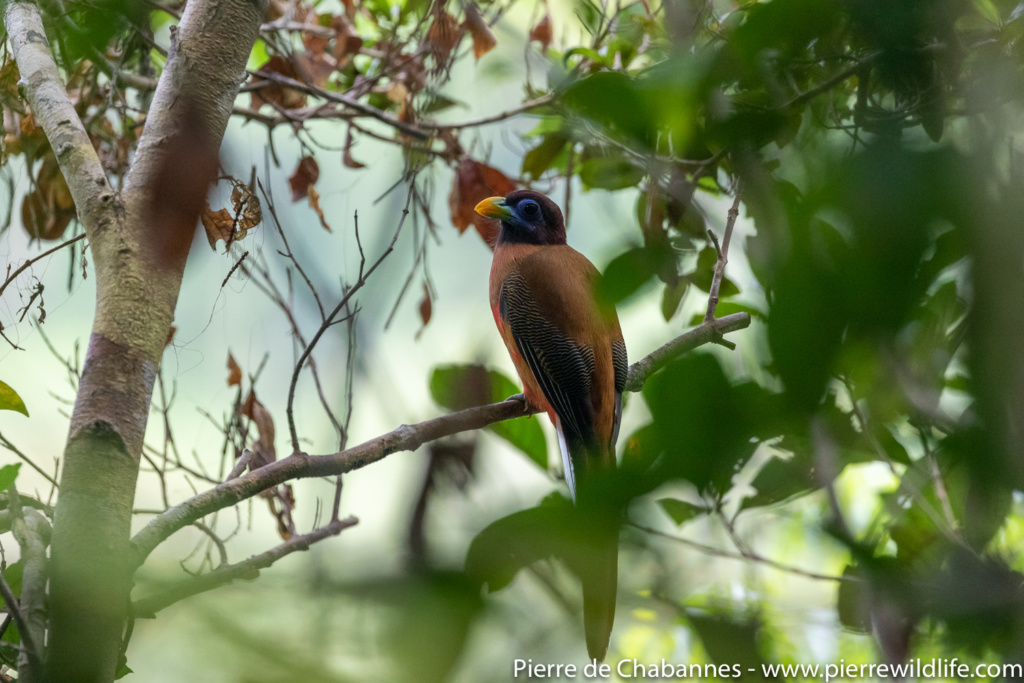 Just as we were about to leave the area on our last day, we were blessed with the unobstructed sighting of a group of Philippine trogons (Harpactes ardens ardens), one of the countries’ most amazing endemics !
Just as we were about to leave the area on our last day, we were blessed with the unobstructed sighting of a group of Philippine trogons (Harpactes ardens ardens), one of the countries’ most amazing endemics !
Until next time (soon!)
Pierre de Chabannes
Founder, ACEE